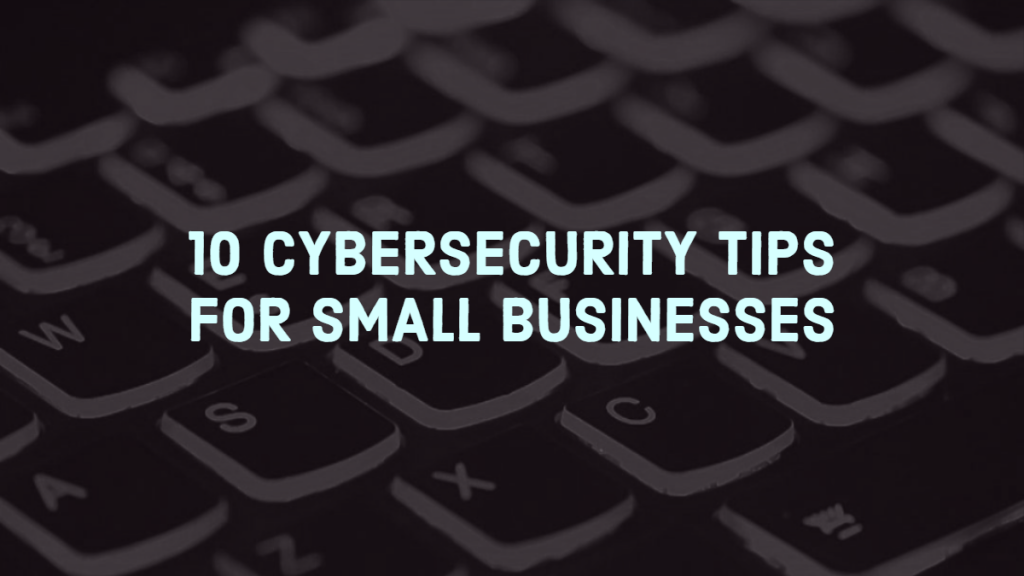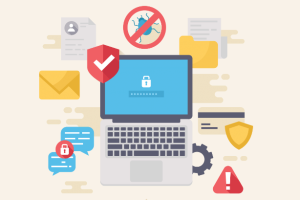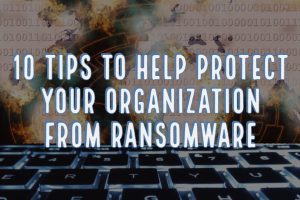
In 2018, 71% of ransomware attacks targeted small businesses, according to a report by Beazley Breach Response Services. It’s clear that small businesses are a cybercriminals favorite target, yet many remain unprepared to handle a cyber-attack.
Is it that small businesses don’t care about cybersecurity?
It wouldn’t be fair to make that assumption; however, small businesses do often overlook cybersecurity concerns. This could be the result of many different things. For example, small businesses often do not have the resources to dedicate to cybersecurity. In fact, some of those businesses don’t have a dedicated IT individual/company at all. In some instances, small businesses may be carrying the “it won’t happen to me mentality” – despite plenty of statistics stating that small businesses are the most susceptible to a cyber-attack. And then there is the complexity of the topic. Many organizations don’t understand cybersecurity. Mix the lack of understanding with the other reasons that cybersecurity is often overlooked, it’s easy for small businesses to put it on the back burner and forget about it.
Out of sight, out of mind
Another reason it’s hard to get organizations to care about cybersecurity is that “if they can’t see it, it isn’t there”. It’s easy to take physical security of your organization seriously. You know that you must lock the office door when you leave, or that leaving medication unlocked and unsupervised could lead to its disappearance.
Unfortunately, cybersecurity doesn’t work the same way. Organizations can be told about cybersecurity risks and best practices, but not being able to physically see the danger makes it difficult to care or prioritize those safeguards above others. Think about it, you’ve used the same password for everything, for years. It’s not a difficult password so it’s easy for you to remember. You’ve heard that complex passwords are important, and you know you should never use the same password across multiple accounts, but you’ve been doing this for years and nothing bad has happened, so it’s probably not a concern for you. Cybersecurity is often out of sight, out of mind.
Healthcare organizations are especially vulnerable
The healthcare industry is the most targeted industry by cybercriminals. Many of the reasons for this are the same reasons that attackers target small businesses. Healthcare organizations also see a lot of turnover, which could translate to cybercriminals as new employees to target, many of which, may not be properly trained.
The value of healthcare data to a cybercriminal is also unparalleled. Medical records bring in big bucks on the dark web, allowing these attackers to see large returns for even just one successful attack.
Don’t wait till it’s too late
The worst mistake you can make is to think you’re not at risk, or not think cybersecurity is a high enough priority to do something about it. Small businesses need to take what we’ve learned about cybercriminals targeting them as a warning and act before they too become another statistic.
Cybersecurity tips
1. Recognize You’re a Target – First and foremost, you must accept that you are a target for cybercriminals. Every organization, small or large is a target and no industry is off limits. If cybercriminals see value in attacking your organization, they will.
2. Security Risk Assessment – It’s important to understand where your organization’s security gaps are. Perform a Risk Assessment to determine what safeguards should be in place but are not. For example, policies, data backup procedures, inactivity timers on your computers, etc.
3. Security Awareness Training – Employees must be trained on cybersecurity and understand how to spot malicious attempts made by cybercriminals. Employees should know how to spot a phishing email and the dangers of clicking attachments or URLs within emails, as these are common methods for a hacker to get in.
4. Complex Passwords – Passwords must be complex, reasonably long (at least 10 characters), and different across all accounts. Simple passwords can easily be cracked by cybercriminals through a brute-force attack, putting your entire organization at risk. Using repeat passwords across various accounts is also dangerous since one compromised password could give a hacker access to all your accounts.
5. Use a Password Manager – Managing several difficult passwords can be a difficult task, but password security should not be compromised for convenience. Using a password manager is a great way to ensure all passwords are secure. The best part is, you only need to remember one master password.
6. Enable Two-Factor Authentication – Sometimes referred to as 2FA, or multi-factor authentication, two-factor authentication is another layer of security for accessing your accounts, aside from you entering your credentials. 2FA requires a second form of authentication for you to successfully log in. For example, you may have to enter a 6-digit code sent to you via a text message to prove it is really you who is trying to log in.
7. Perform Updates – Ensure your software is being updated when updates become available. Software updates are often issued to fix a vulnerability found in the software. Not performing updates can often leave you susceptible to attacks that could have been prevented.
8. Regularly Backup Your Data – Do not underestimate the importance of routinely backing up your data. A cyber-attack could occur at any minute, and when it does, your data could be at risk. If your data becomes inaccessible or corrupt, through a ransomware attack, for example, you’ll need to be able to get that data another way – from your backups.
9. Audit accounts for suspicious activity – Make sure you’re performing audits on your systems. For example, if you have an EHR, you should be auditing it regularly looking for unusual activity, such as logins after hours, users accessing abnormal amounts of medical records. If inappropriate activity is occurring, the quicker you catch it the better off you’ll be.
10. Cyber Insurance – As cybercriminals continue to become more sophisticated, attacks will continue to occur. It’s no longer a matter of if your organization will be attacked, but when. Security incidents are incredibly costly, sometimes putting organizations out of business. Costs could include a breach coach, forensics, breach notification, credit monitoring, crisis management, and more. Verify that your organization has cyber insurance (this coverage is often not included in your standard policy) to protect you in the event of a security incident.




Leave a Reply